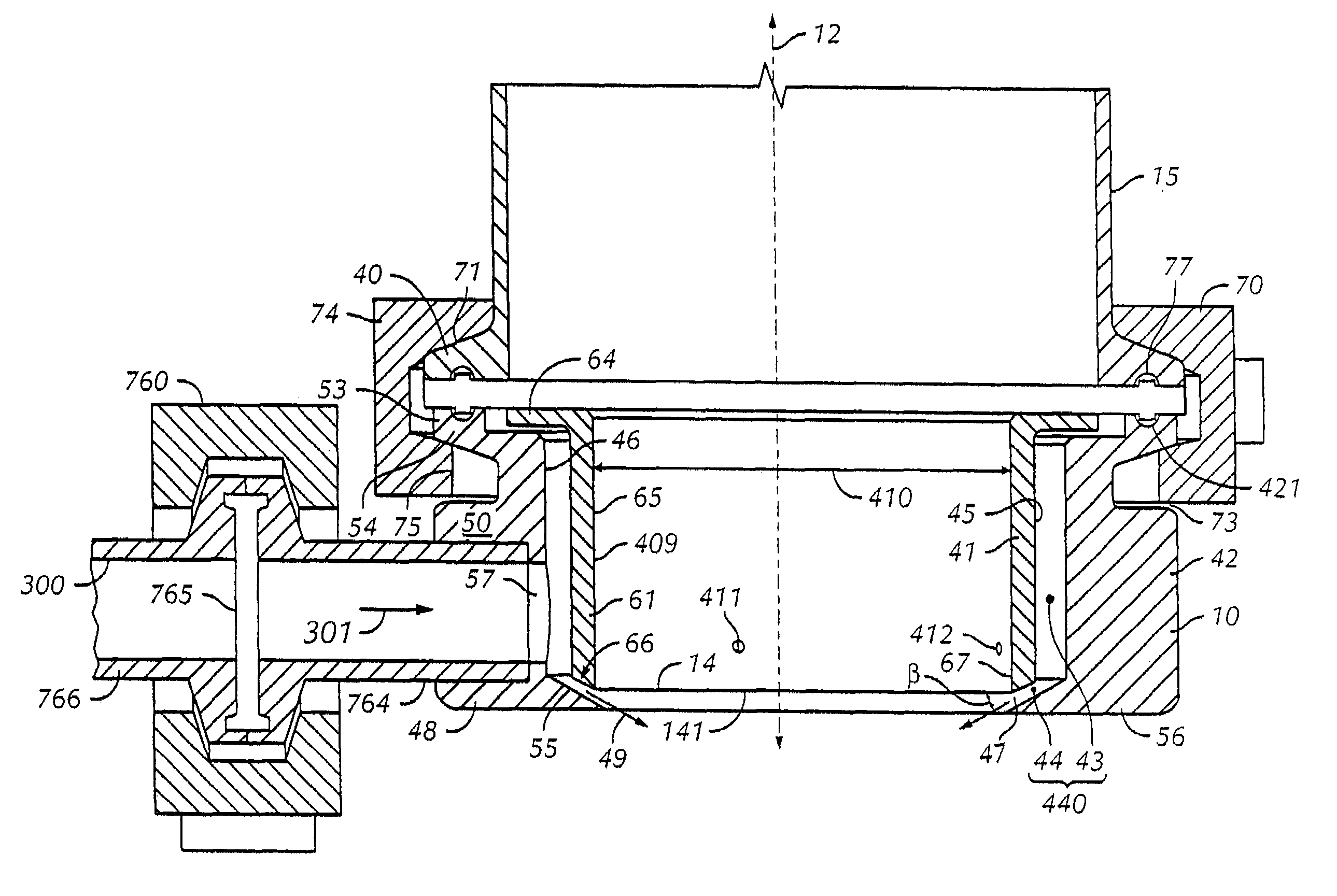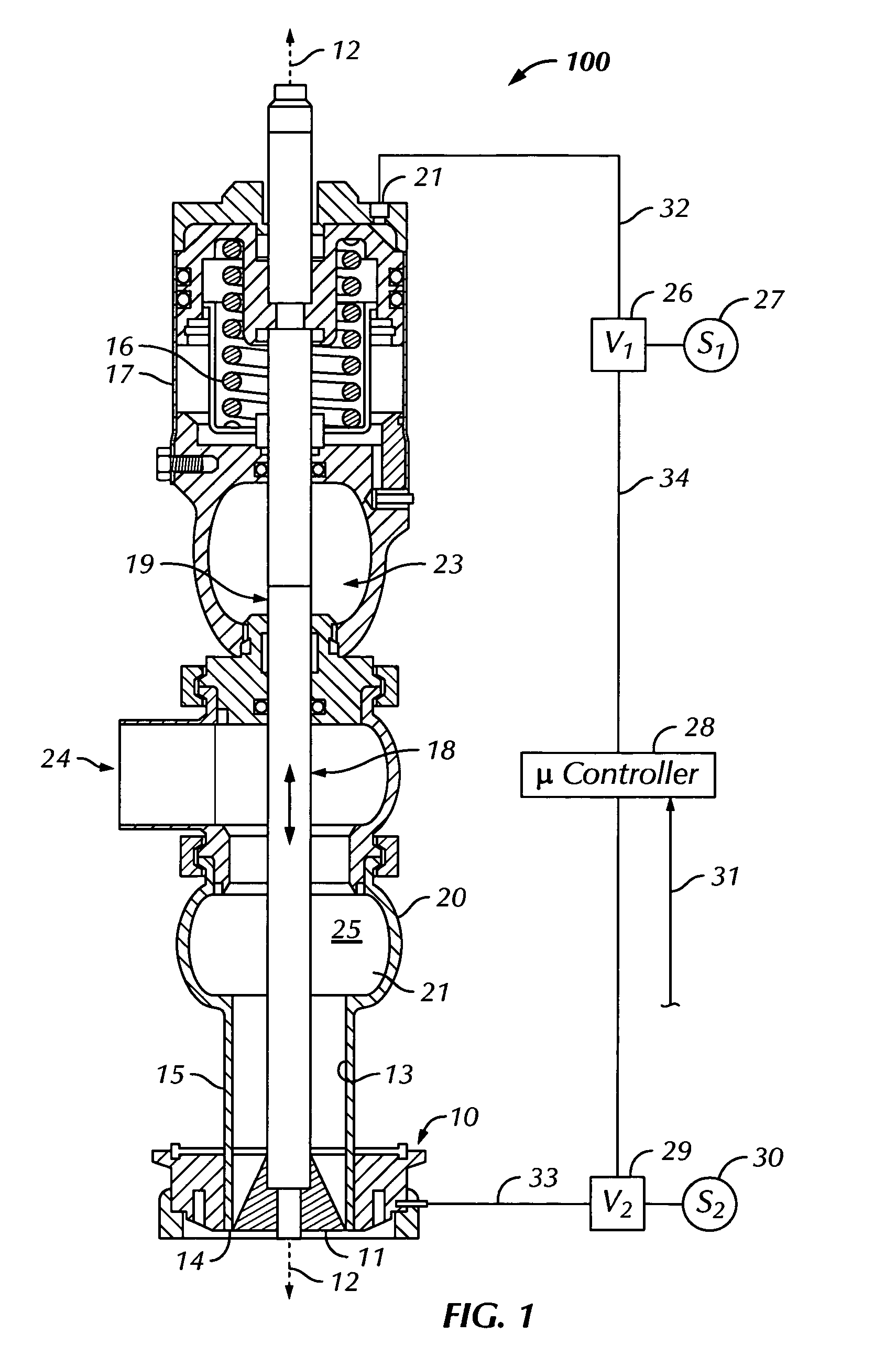Cleaning attachment for fluid dispenser nozzles and fluid dispensers using same
a technology of fluid dispenser nozzle and cleaning attachment, which is applied in the direction of liquid handling, lighting and heating apparatus, combustion types, etc., can solve the problems of inability to achieve positive flow cutoff in the filling apparatus using conventional sanitary filling valves, inability to achieve positive flow cutoff in the filling apparatus, and inability to control the weight of packaged cheese. to achieve the effect of easy disassembly and assembly
- Summary
- Abstract
- Description
- Claims
- Application Information
AI Technical Summary
Benefits of technology
Problems solved by technology
Method used
Image
Examples
Embodiment Construction
[0025]Referring to FIG. 1, a fluid dispenser 100 having a nozzle attachment 10 according to an embodiment of the invention is illustrated. A general overview of the manner in which the dispenser 100 functions is provided as follows. Axial movement of the valve head 11 up or down in the vertical direction to operate the dispenser 100 occurs in the following manner. For purposes of the descriptions herein, references to an axial direction means parallel to the direction of the centerline 12 of the dispenser 100, while a radial direction will be perpendicular thereto.
[0026]The valve head 11 is normally maintained in a closed position in which it is seated against the inner walls 13 of the discharge end 14 of the nozzle 15 in a sealing relationship. The dimensions of the valve head 11 and inner walls 13 at the discharge end 14 of the nozzle 15 are machined to have very close tolerances so that an essentially gap-free seal is made between the valve head 11 and the inner walls 13 of the v...
PUM
 Login to View More
Login to View More Abstract
Description
Claims
Application Information
 Login to View More
Login to View More - R&D
- Intellectual Property
- Life Sciences
- Materials
- Tech Scout
- Unparalleled Data Quality
- Higher Quality Content
- 60% Fewer Hallucinations
Browse by: Latest US Patents, China's latest patents, Technical Efficacy Thesaurus, Application Domain, Technology Topic, Popular Technical Reports.
© 2025 PatSnap. All rights reserved.Legal|Privacy policy|Modern Slavery Act Transparency Statement|Sitemap|About US| Contact US: help@patsnap.com



